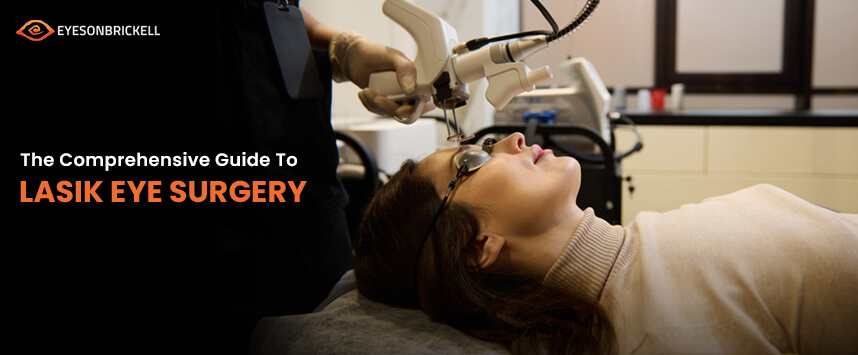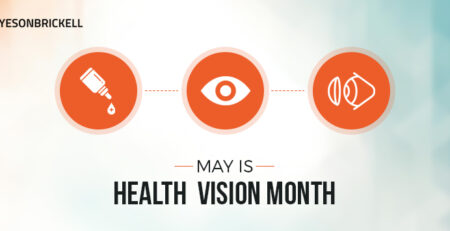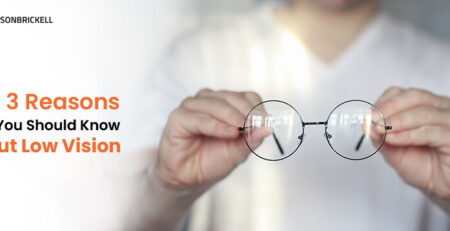The Comprehensive Guide To Lasik Eye Surgery
What is Lasik?
Lasik, also known as “laser-assisted in situ keratomileuses,” is a type of laser eye surgery used to treat a wide range of vision problems. Candidates for this eye surgery typically have moderate degrees of refractive error, such as nearsightedness, farsightedness, astigmatism, or presbyopia. The Lasik Miami treatment, like other types of laser refractive surgery, reshapes the front surface of the eye to allow light entering the eye to focus on the retina without having glasses or contact lenses.
Note: If are looking for laser-assisted in situ keratomileuses treatment, you must look for professional from laser eye center of Miami lasik.
Lasik is a quick surgery performed by an ophthalmologist in a specialist laser eye center of Miami or eye facility clinic. While any surgery has obvious risks, Lasik is relatively widespread and has a high success rate. This surgery uses a specific type of cutting laser to precisely alter the shape of the dome-shaped translucent tissue at the front of your eye (cornea) to improve vision.
Why is it Performed?
Most people who use glasses or contacts to see are candidates for Lasik. LASIK can treat nearsightedness, farsightedness, and astigmatism, with varying degrees of correction for each.
- Nearsightedness: Light rays focus in front of the retina and impair distant vision when your eyeball is somewhat longer than normal or when the cornea curves too sharply. Close items can be seen fairly clearly, but distant objects cannot.
- Farsightedness: Farsightedness occurs when the eyeball is shorter than average or the cornea is overly flat, causing light to focus behind the retina rather than on it. This causes hazy close-up and sometimes distant vision.
- Astigmatism: Astigmatism occurs when the cornea curves or flattens unevenly, disrupting the focus of near and distant vision.
Types of Lasik Eye Surgery
1. IntraLASIK
Instead of a microkeratome, the surgeon at laser eye center of Miami lasik uses a femtosecond laser to construct the corneal flap with IntraLasik. The femtosecond laser beam pulses at 1 quadrillionth of a second. Because it provides the surgeon with better precision and accuracy, this procedure provides patients with a safer computer-controlled alternative for producing the corneal flap.
IntraLASIK allows surgeons to operate on many patients who were previously thought unsuitable because of their thin corneas. Because the femtosecond laser can produce thinner, more precise cuts in the corneal flap, doctors can conduct IntraLASIK on people with thinner or flatter corneas.
2. Custom LASIK
Custom LASIK is a laser vision correction process that tailors your treatment to your specific visual characteristics. Using wavefront technology, custom LASIK delivers more precise data about your visual requirements. A wavefront analyzer compares the way light travels through your eye to the way light travels through an eye with perfect vision.
Nearsightedness, farsightedness, and astigmatism are examples of lower-order aberrations, often known as refractive errors. Lower-order aberrations are treated with traditional LASIK procedures. Higher-order aberrations are deviations from refractive errors that produce vision difficulties such as glare, halos, poor night vision, and low contrast sensitivity. These higher-order aberrations can be corrected by custom LASIK.
How Does Lasik Eye Surgery Work?
This procedure includes three main steps:
- Creating a Corneal Flap: A suction ring is attached to the eye to keep it stable, and a femtosecond laser or a mechanical tool called a microkeratome is used to form a thin flap in the cornea, the eye’s transparent, protective outer layer.
- Reshaping of the Underlying Corneal Tissue with a Laser: A computer-controlled laser beam reshapes the cornea by eliminating tiny tissues, resulting in better vision by focusing light more precisely on the retina.
- Readjusting the Flap Over the Treated Area: The corneal flap is re-positioned and bonded to the underlying cornea without the use of stitches. The reshaped cornea after LASIK enables good vision without the use of glasses or contact lenses.
How to Prep for LASIK?
Getting ready is almost as important as the surgery itself! Here’s what to do:
- Take a break from your contacts. They can change the shape of your cornea.
- Get a thorough eye exam. Your doctor will check if you’re a good candidate.
- Ask questions. Make sure you understand the risks, benefits, and what to expect afterward.
Going Through LASIK Eye Surgery – What should You Do?
Before:
People who are properly assessed before surgery to determine that they are appropriate candidates for the operation tend to have the best long-term benefits from LASIK. If you wear contact lenses, which might alter the shape of your cornea, you must stop wearing them and only wear glasses for at least a few weeks before your examination and operation. Your doctor will give you precise instructions based on the type of contacts you use and how long you’ve been wearing contacts.
The following symptoms will be looked for by your doctor:
- Infection of the eyes Inflammation
- Dry Eyes
- Large pupils High eye pressure
Your doctor will discuss the risks and benefits of LASIK surgery, as well as what to expect before and after the process, as well as answer any questions you may have.
During:
The LASIK procedure normally takes 30 minutes or less. You lie on your back in a reclining chair during the treatment. You may be offered relaxation medication. A suction ring placed on your eye soon before cutting the corneal flap may generate pressure and cause your vision to fade slightly.
Your eye surgeon at laser eye center of Miami lasik reshapes sections of your cornea with a laser that has been programmed. A small quantity of corneal tissue is eliminated with each laser pulse. After reshaping the cornea, the surgeon replaces the flap. The flap normally heals without the need for sutures.
You will be asked to focus on a spot of light during the surgery. While the laser reshapes your cornea, you can keep your eye locked on this light.
After:
Your eye may itch, feel gritty, burn, and become watery immediately after surgery. You’ll most likely have clouded vision. In most cases, you will feel little pain and will regain your vision shortly.
To make you comfortable for several hours after the treatment, you may be given pain medicine or eye drops. Your eye doctor may also recommend that you wear a shield over your eye at night until it recovers.
A follow-up appointment with your eye doctor will be scheduled one to two days after surgery. It may be a few weeks before you can resume using cosmetics around your eyes.
What to Expect After LASIK
Post-surgery, your eyes might feel:
- Itchy
- Gritty
- Slightly watery
But don’t worry—this goes away fast. Vision usually starts to clear up within a day or two.
Your doctor will likely give you eye drops and schedule follow-up visits to make sure you’re healing well. Just skip eye makeup for a while and avoid rubbing your eyes.
Lasik Eye Surgery Outcomes
LASIK can typically provide better vision without the bother of glasses or contact lenses. Your findings are determined by your refractive error and other factors. People with a low degree of nearsightedness have the best results with refractive surgery. People with astigmatism with a significant degree of nearsightedness or farsightedness have fewer predictable results.
More than 8 out of 10 people who have had LASIK refractive surgery no longer use glasses or contact lenses for most activities.
The Advantages of LASIK
This is most popular laser eye operations for a reason. Among the advantages are:
- A high rate of success. This operation has been shown to correct vision, and post-operative modifications can improve vision even further (if needed).
- The process involves very minimal discomfort. The surgeon will also use numbing drops to relieve any discomfort.
- Your vision is fixed very instantly, if not the next day.
- There are no stitches or uncomfortable bandages to wear.
- Adjustments can be made to address any visual problems caused by age, and they are typically free of charge.
- You may be able to eliminate the need for eyeglasses or contacts, or significantly reduce your vision correction prescription.
If you’re tired of blurry mornings and high-maintenance lenses, LASIK might just be the freedom you’ve been waiting for. At Eyes on Brickell’s Laser Eye Center of Miami, our compassionate eye care professionals are dedicated to enhancing your quality of life through expert vision care. They go above and above to ensure that you always see the world in the best possible light and with a better vision. Also, if you are interested for a wide range of glasses and contacts, do visit Eyes on Brickell.
Ready to see the world in HD? Talk to your eye specialist today and take the first step toward a glasses-free life.
Schedule your in-person or an Online Appointment or get Lasik Eye Surgery in Miami today!











